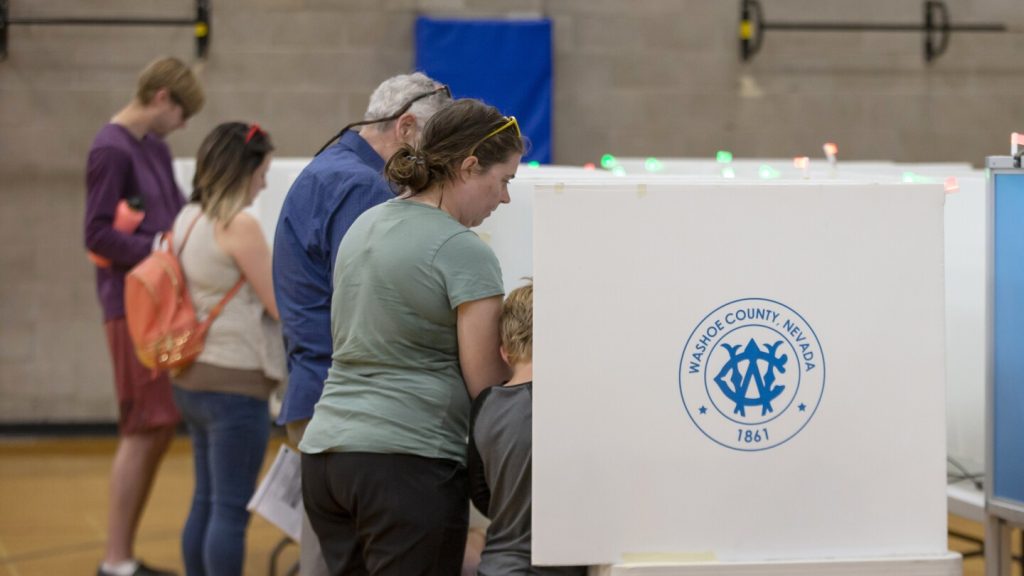Nevada voters are heading to the polls for the second or third time this year to select candidates for fall’s legislative races. The primaries for Congress and the state legislature are taking place on Tuesday after the presidential primaries and caucus held earlier in the year. The state currently has five Democratic and one Republican members in its congressional delegation. Key races include the Republican primaries for Senate and in the Democratic-held congressional districts. Incumbent Sen. Jacky Rosen, a Democrat, faces two Democratic challengers in the primary. The races will play a crucial role in determining the balance of power in the Senate.
There are key races in Nevada’s 1st, 3rd, and 4th congressional districts on the Republican side. These districts include parts of Clark County, home to Las Vegas, and are currently represented by Democratic incumbents. The 1st District, represented by Dina Titus, is considered the safest for the incumbent. The 3rd District is potentially the most competitive race, with seven Republicans seeking the nomination. The leading fundraiser in this district is former Nevada State Treasurer Daniel Schwartz. In the 4th District, there are three candidates, including financial adviser and veteran David Flippo and former North Las Vegas Mayor John Lee, who switched his party affiliation to Republican.
The Nevada state primary will be held on Tuesday, with polls closing at 10 p.m. ET. The Associated Press will provide coverage of 43 contested primaries for Senate, House, state Senate, state Assembly, and Washoe County commissioner. The key races include both Democratic and Republican primaries for Senate, as well as Republican primaries for the 1st, 3rd, and 4th House districts. Registered party members can vote only in their party’s primary, and same-day registration is allowed. Clark County, home to the majority of Nevada’s residents, plays a crucial role in statewide elections. The state has encouraged counties to start tabulating votes early to release results faster.
Vote counting in Nevada can be slow, with mail-in ballots accepted up to four days after the election. Every registered voter receives a mail-in ballot by default. The state will not release results until the final voter in line at the polls has cast their ballot, leading to a delay in announcing results. Nevada ballots include a “none of these candidates” option, and if this option wins, the second-highest vote-getter advances to the general election. The state does not have an automatic recount law, but candidates can request a recount within three days of the canvass. Turnout in Nevada is diverse, with a mix of Democrats, Republicans, and independents participating in primaries.
In the past, results in Nevada’s presidential primaries were reported relatively quickly, with about 84% of votes counted by the end of election night. Mail-in and early voting play a significant role in Nevada’s elections, with 90% of Democratic votes and 85% of Republican votes cast before election day in the February presidential primaries. On Tuesday, there will be 147 days until the November general election, with the primary results setting the stage for fall’s legislative races. Nevada voters have the opportunity to shape the state’s congressional delegation and make their voices heard in key races that could impact the balance of power in the Senate.


